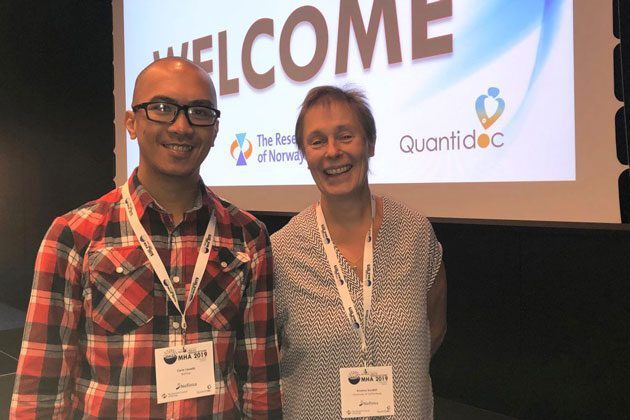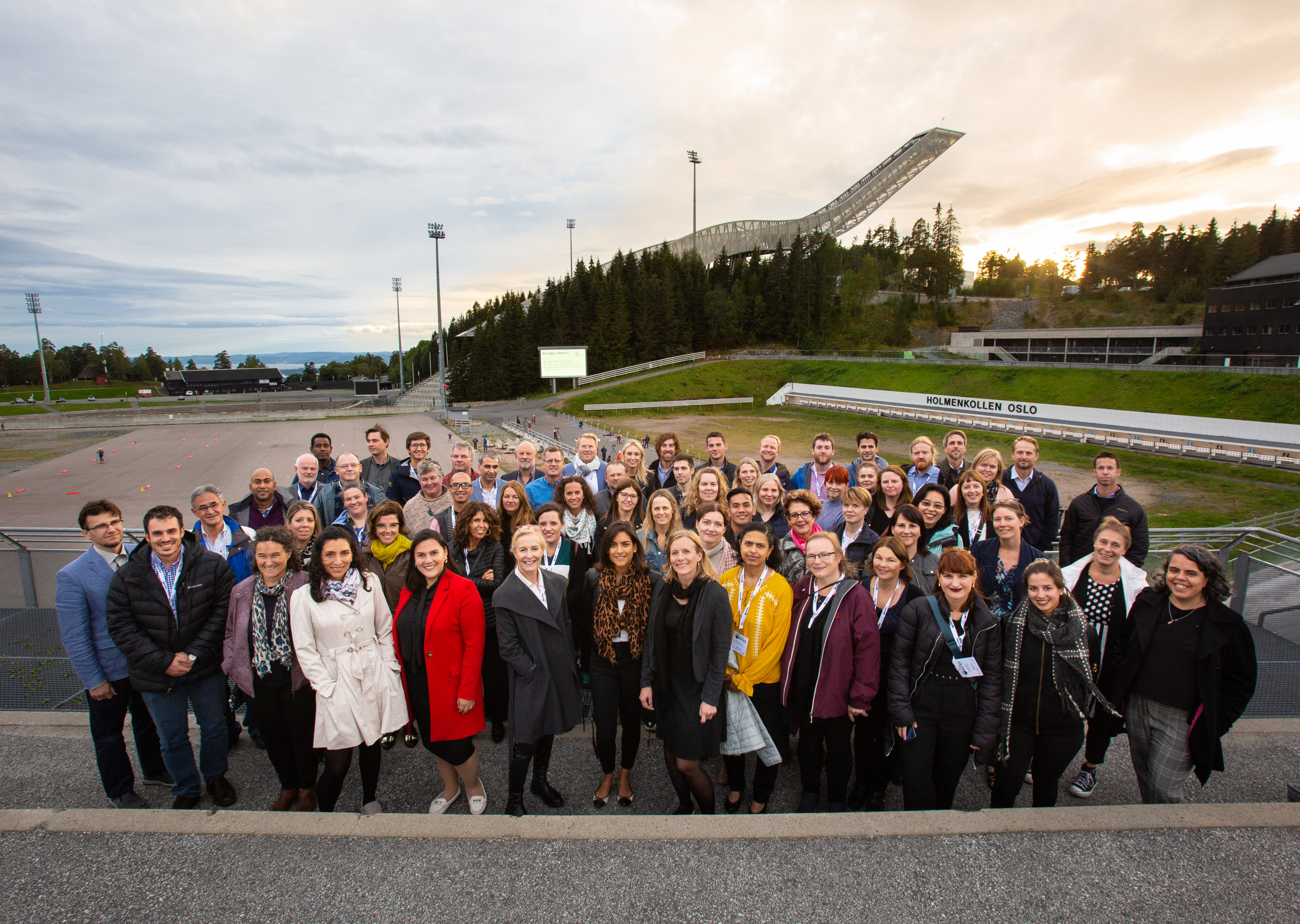99 researchers brought together for preventive fish health

Last week, researchers and industries from all over the world met for a symposium to dive into research on fish skin, gut and gill tissues in aquaculture. The idea was to direct more attention to preventive fish health.
Information about the next symposium and the platform will be on the symposium’s website mucohealthaqua.com/.
“I am extremely happy; this was beyond the expectations I had beforehand. Many professionals from different backgrounds came for such a specialist theme and we derived both benefit and pleasure from each other’s knowledge.”
So says fish health researcher Carlo C. Lazado of Nofima, who took the initiative for the symposium “1st International Symposium on Mucosal Health in Aquaculture (MHA2019)” which gathered 99 delegates from 17 countries in Oslo, Norway, for three days. This was the first symposium on this topic and judging from the feedback there will be more.
But what is mucosal health in aquaculture? To put it simply, mucosal health reflects how well the mucosal barrier tissues in the gills, intestines and skin work to maintain good health. For example, how well the skin prevents a salmon louse from attaching itself, how the gills respond to treatment against the gill disease AGD or how well the intestine tolerates soy in the feed.
Half the delegates presented research on stage, and many of them are leading authorities on the subject, such as Eric Peatman from Auburn University in the USA who delivered a plenary lecture. He explains that with mucosal health you direct attention to early stages of infection, so as to stay one step ahead of disease. Because when your attention is drawn to the kidneys, the fish is already very ill. He believes we are in the process of shifting attention from treatment to preventive fish health:
“These barrier tissues are the fish’s first line defence, where the pathogens meet the fish. We know a good deal, but we need to understand more about the interaction between the fish and the pathogens in the barrier tissues so as to give the fish a better aquatic environment, better feed, vaccination strategies and so on,” says Peatman.
Developing welfare indicators
Kristina Sundell of the University of Gothenburg is a veteran in the field of research on barrier tissues:
“Where before we were concerned about demonstrating that diminished barrier tissues led to reduced function in fish, now we have come a long way towards establishing welfare indicators, which fish farmers will be able to use to measure fish welfare in the field. Indicators on barrier tissues are far more stable than measurements in blood, for example.”
“The aim is not to have to wait until the fish becomes ill, but that we can find early signs to prevent this,” says Sundell.
And such indicators are already on the way commercially. As well as the Research Council of Norway, Quanitdoc was a sponsor of the symposium. They sell exactly these kinds of welfare indicators, which can measure stress response based on barrier tissues and thereby predict developments in the fish’s health.
Judging by the lectures, a good deal of research remains to be done to find out about mechanisms in the fish’s barrier tissues. Nofima is working on it:
“In this field we need a good balance between basic and applied research, and at Nofima we perform experiments in the field where we can test out the theory of what constitute good aquaculture strategies, feed and environment in practice,” says Gunn Berit Olsson, research director in fish health.
She also thought it was very positive to see the broad presentation of themes at the symposium, such as human health from the University of Oslo and physical measurement methods from NTNU, as well as many who presented research on many different fish species.
And so it continues
With this symposium, Lazado aims to establish a platform to present and discuss state-of-the-art research in mucosal health in several aquaculture species. A symposium must lean heavily on research and it also gathered a predominance of researchers from the university and institute sectors, as well as professionals in pharmaceuticals, small aquaculture companies and the feed and ingredient industries.
Lazado has received an enquiry from a research group that is interested in hosting the second symposium in two or three years.
Photos from the symposium

The delegates gathered for a conference dinner at Holmenkollen in Oslo. Photo: Joe Urrutia © Nofima 
Fish Health scientist Carlo C. Lazado of Nofima took initiative to the symposium. Photo: Joe Urrutia © Nofima 
Photo: Joe Urrutia © Nofima 
The award for best poster went to Eoin Costelloe, PhD student from the University of Aberdeen, Scotland. Photo: Joe Urrutia © Nofima 
Scientist Ida Rud of Nofima uses advanced sequencing methods to map bacterial communities on the salmon barrier tissues. She points out the importance of good control samples. Photo: Joe Urrutia © Nofima. 
Professor Eric Peatman has written a book with the same name as the symposium: Mucosal Health in Aquaculture.. Photo: Nofima 
Professor Kristina Sundell with Carlo C. Lazado, the initiator of the symposium. Photo: Nofima.
Contact person
Research areas
